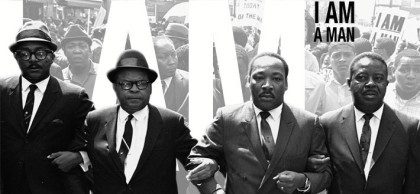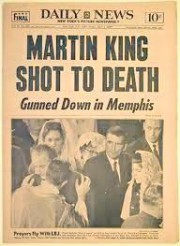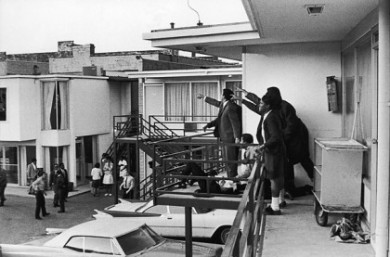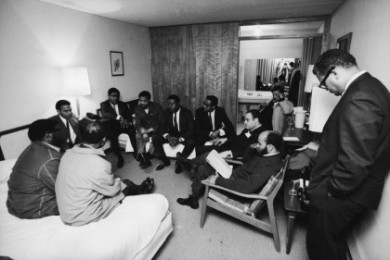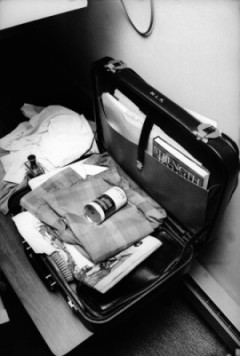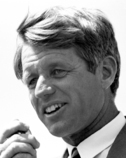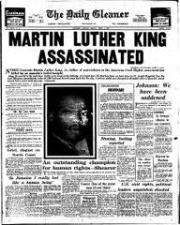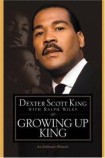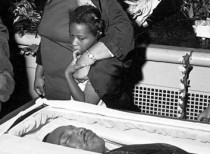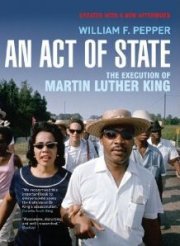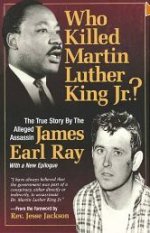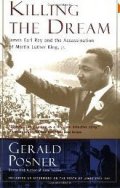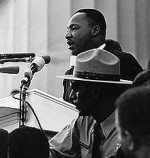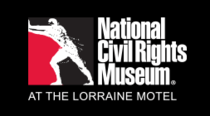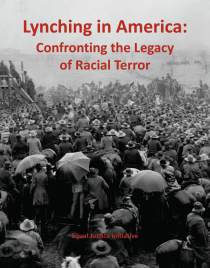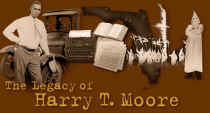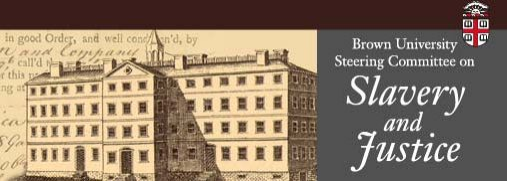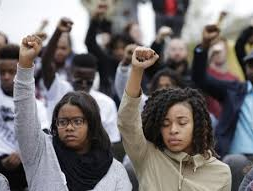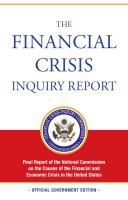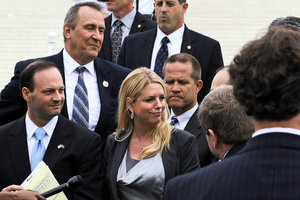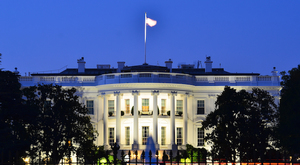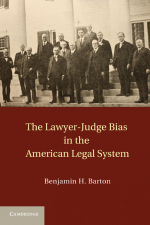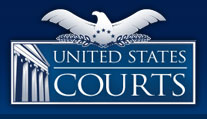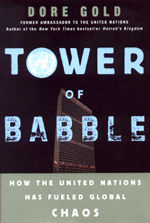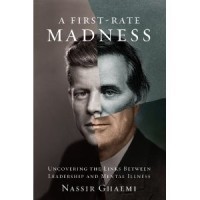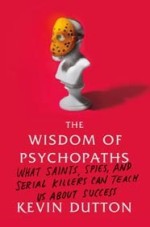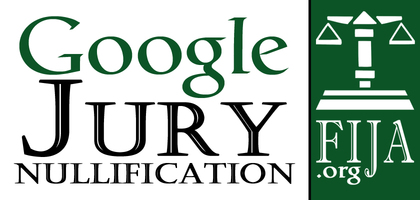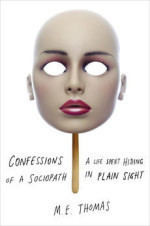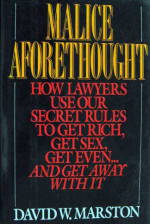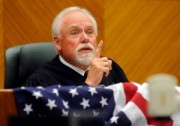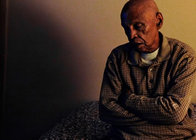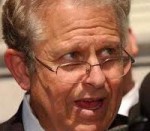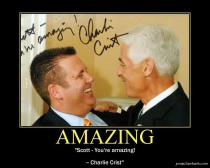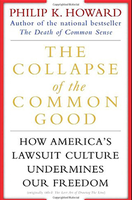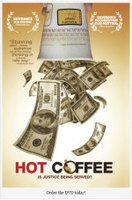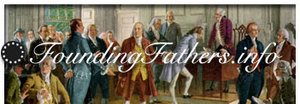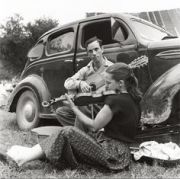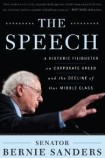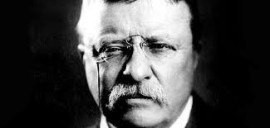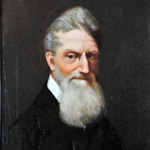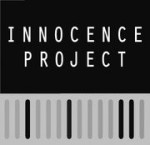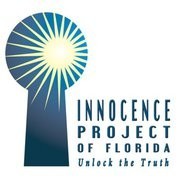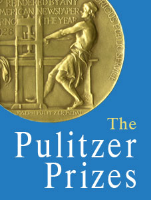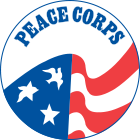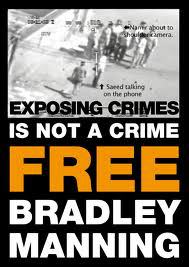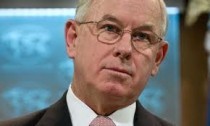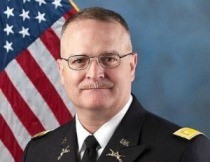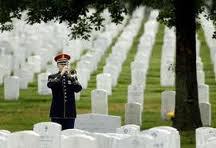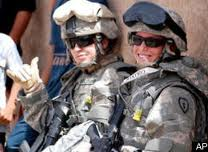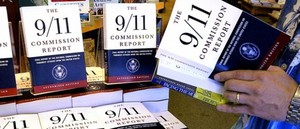Assassination of Dr Martin Luther King, Jr - April 4, 1968
"In the End, we will remember not the words of our enemies, but the silence of our friends." -- Dr. Martin Luther King Jr.
King's Last Speech: "I Have Been To The Mountaintop"
I've Been to the Mountaintop
Wikipedia
King spoke on April 3, 1968, at the Mason Temple (Church of God in Christ Headquarters) in Memphis, Tennessee. The next day, King was assassinated. The speech primarily concerns the Memphis Sanitation Strike. King calls for unity, economic actions, boycotts, and nonviolent protest, and challenges the United States to live up to
its ideals. At the end of the speech, he discusses the possibility of an untimely death. Read more
YouTube link to short 2.38 clip of the end of Dr. King's speech.
Assassination of Dr Martin Luther King, Jr - April 4, 1968
Walter Cronkite had almost finished broadcasting the "CBS Evening News" when he received word of Martin Luther King's assassination. His report detailed the shooting and the nation's reaction to the tragedy. YouTube
Assassination of Martin Luther King, Jr.
Wikipedia
Martin Luther King, Jr., a prominent American leader of the African-American civil rights movement and Nobel Peace Prize laureate, was assassinated at the Lorraine Motel
in Memphis, Tennessee, on April 4, 1968, at the age of 39. On June 10, 1968, James Earl Ray, a fugitive from the Missouri State Penitentiary, was arrested in London at Heathrow Airport, extradited to
the United States, and charged with the crime. On March 10, 1969, Ray entered a plea of guilty and was sentenced to 99 years in the Tennessee state penitentiary. Ray later made many attempts to
withdraw his guilty plea and be tried by a jury, but was unsuccessful; he died in prison on April 23, 1998, at the age of 70. Read more
The Night MLK Was Murdered: A Photographer’s Story
The Night MLK Was Murdered: A Photographer’s Story
Time Life Civil Rights
By Ben Cosgrove, Editor of LIFE.com
March 20, 2014
On April 4, 1968, LIFE photographer Henry Groskinsky and writer Mike Silva, on assignment in Alabama, learned that Martin Luther King, Jr., had been shot at the Lorraine Motel in Memphis. The two men jumped into their car, raced the 200 miles to the scene of the assassination, and there — to their astonishment — found that they had unfettered access to the motel’s grounds; to nearby abandoned buildings from which the fatal rifle shot likely came; to Dr. King’s motel room; and to the bleak, blood-stained balcony where the civil rights leader fell, mortally wounded, hours earlier.
"I was astonished by how desolate it all was," Groskinsky, now 79 years old, told LIFE.com when asked about the mood in the neighborhood around the motel. "Then again, everyone probably thought that the person who shot Dr. King might still be out there somewhere."
For reasons that have been lost in the intervening decades, Groskinsky’s photographs from that eerily quiet night in Memphis — taken at the site, and on the very day, of one of the signal events of the 20th century — were not published in LIFE magazine, and the story behind them was not told. Until now. Read more
In Dr. King's Room: Stunned, silent members of the Southern Christian Leadership Conference in Dr. King's room, including Andrew Young (far left, under table lamp) and the civil rights leader and King's colleague, Reverend Ralph Abernathy, seated in the middle on the far bed. "I was very discreet," Groskinsky recalls. "I shot just enough to document what was going on. I didn't want to make a nuisance of myself. And right there, almost in the center of the picture, in the mirror you can see the reflection of me taking the picture. It's very somber, and there I am with a flash camera. So I took a couple of pictures and just kind of backed off."
Dr. Martin Luther King, Jr.'s Briefcase, Room 306, the Lorraine Motel
King's neatly packed, monogrammed briefcase in his room at the Lorraine. "That is Dr. King's briefcase, just as it was. His brush. His pajamas. That's a can of shaving cream there on top. And you can
see his book, Strength to Love, peeping from the pocket."
Additional facts, photos and video about Martin Luther King, Jr.
FINALLY REVEALED after 44 years: Rarely seen pictures captured on the night Martin Luther King was assassinated.
RFK announcing the death of Martin Luther King, Jr.
"In our sleep, pain which cannot forget falls drop by drop upon the heart until, in our own despair, against our will, comes wisdom through the awful grace of God."
- RFK quoting the poet Aeschylus
"Can you image....that we once lived in a time where a man like this could have been president?"
"Forget the appeal across races. Forget the charisma, the dedication to the poor, the ability to say things others were too afraid to say."
"The fact that he could speak like this, extemporaneously, to a crowd that just heard their hero had been shot and killed, is astonishing." - author unknown
Robert Kennedy
The Indianapolis Speech and Final Campaign Speech
From the author: This video pulls together the audio from Robert Kennedy's Indianapolis speech on the day of Martin Luther King's death and audio from Kennedy's last
speech at the Ambassador Hotel in Los Angeles during his run for the Democratic Presidential Nomination in 1968. His words still speak for our present day, 40 years later. Visit http://www.jasonreim.com/video_rfk.htm for higher quality. The music used in the video is from the Polyphonic Spree (Section 20). I
consider this to be part II to the MLK video.
The Martin Luther King Assassination
Mary Ferrell Foundation
The assassination of Dr. Martin Luther King, Jr. was one of the opening acts which plunged 1968 into a year of turmoil. Coming on the heels of the Tet Offensive which
showed the war in Vietnam to be in disarray, and President Johnson's decision not to seek re-election, King's assassination was itself soon followed by the murder of Robert Kennedy, violence at the
Democratic National Convention, and a general unraveling of the country into a period of violence and despair.
Like the other assassinations of the 1960s, the King murder had its "lone nut," in this case James Earl Ray, an escaped convict who purchased the rifle found near the
assassination scene and was caught in flight two months later. But, also like the other assassinations, evidence of conspiracy was easily found, despite being ignored by government
investigators. Read more
Mary Ferrell Foundation, Facebook
Report of the Select Committee on Assassinations of the U.S. House of Representatives. A. James Earl Ray Fired One Shot at Dr. Martin Luther King Jr., the Shot Killed Dr. King. National Archives
- Biography of James Earl Ray
- The committee's investigation
- Dr. King was killed by one shot fired from in front of him
- The shot that killed Dr. King was fired from the bathroom window at the rear of a roominghouse at 422 1/2 South Main Street, Memphis, Tenn.
- James Earl Ray purchased the rifle that was used to shoot Dr. King and transported it from Birmingham, Ala., to Memphis, Tenn., where he rented a room at 422 1/2 South Main Street, and moments after the assassination, he dropped it near 424 South Main Street
- It is highly probable that James Earl Ray stalked Dr. King for a period immediately preceding the assassination
- James Earl Ray fled the scene of the crime immediately after the assassination
- James Earl Ray's alibi for the time of the assassination, his story of "Raoul," and other allegedly exculpatory evidence are not worthy of belief
- James Earl Ray knowingly, intelligently, and voluntarily pleaded guilty to the first
degree murder of Dr. Martin Luther King, Jr.
(a) Biography of James Earl Ray
James Earl Ray was born on March 10, 1928, in Alton, Ill. The Ray family moved a few miles from Alton to Bowling Green, Mo., in 1930, and 5 years later they moved to near Ewing, Mo., where Ray
received his elementary school education.
At age 16, Ray moved back to Alton, where he lived with his grandmother. He worked in the dye room of the International Shoe Tannery in nearby East Hartford, Ill. He was laid off in December 1945
and, 6 weeks later, enlisted in the Army. He was stationed in West Germany where he was charged with drunkenness and breaking arrest. Ray was discharged for ineptness and lack of adaptability for
service in December 1948. Read more
Who Killed MLK Conspiracy Part 1
Who Killed MLK Conspiracy Part 2
Who Killed MLK Conspiracy Part 3
Who Killed MLK Conspiracy Part 4
Who Killed MLK Conspiracy Part 5
Report of the Select Committee on Assassinations of the U.S. House of Representatives. A. James Earl Ray Fired One Shot at Dr. Martin Luther King Jr., the Shot Killed Dr. King. National Archives, read more
Who Killed Martin Luther King?
by Maria Gilardin / April 4th, 2008
This article is based on the work of a remarkable man. Dr. William Pepper is an attorney, author, and friend of Martin Luther King and his family. In February 1967 King had asked to meet a young man whose work as a journalist in Vietnam showed the terrible impact on the civilian population. King wept and never wavered in his opposition to the war. That young man was Bill Pepper. He became James Earl Ray’s lawyer and assembled the evidence that exonerated Ray — some of which is described below.
Six-oh-one p.m., April 4th, 1968, Martin Luther King has been felled by a single shot.
In 1977 the family of Martin Luther King engaged an attorney and friend, Dr. William Pepper, to investigate a suspicion they had. They no longer believed that James Earl Ray was the killer. For their peace of mind, for an accurate record of history, and out of a sense of justice they conducted a two decade long investigation. The evidence they uncovered was put before a jury in Memphis, TN, in November 1999. 70 witnesses testified under oath, 4,000 pages of transcripts described the evidence, much of it new. It took the jury 59 minutes to come back with their decision that Loyd Jowers, owner of Jim’s Grill, had participated in a conspiracy to kill King, a conspiracy that included J. Edgar Hoover and the FBI, Richard Helms and the CIA, the military, the Memphis Police Department (MPD), and organized crime. That verdict exonerated James Earl Ray who had already died in prison. Read more
Dr. King's Slaying Finally Draws A Jury Verdict, but to
Little Effect
The New York Times
By KEVIN SACK with EMILY YELLIN
December 10, 1999
When 12 jurors returned their decision in a wrongful death trial in Memphis on Wednesday afternoon, they became the first jury to hold someone responsible for playing a
role in the assassination of the Rev. Dr. Martin Luther King Jr. on April 4, 1968.
But with key players dead, with confessions recanted and altered, and with a vast conspiracy alleged but not proved, Wednesday's verdict in the civil trial of Loyd Jowers
seems unlikely, ultimately, to untangle the knot of fact and theory surrounding one of the century's most traumatic events.
The jury in Memphis declared Mr. Jowers liable in Dr. King's death for having purportedly hired a now-dead Memphis police officer, as part of a vast conspiracy, to kill
Dr. King. It also found that unnamed others, including government agencies, had been involved, in effect accepting the plaintiffs' contention that James Earl Ray was innocent, despite his guilty
plea. Read more
Selected excepts from the New York Times
"At a news conference here today, seated at a table with a view of Dr. King's crypt, the civil rights leader's widow and children made it clear that they now consider the
case closed. The ''most incredible coverup of the century'' has now been exposed, said Dexter Scott King, one of Dr. King's four children."
''We know what happened,'' Mr. King said. ''This is the period at the end of the sentence. So please, after today, we don't want questions like 'Do you believe James Earl
Ray killed your father?' I've been hearing that all my life.
No, I don't, and this is the end of it.''
"In Washington, where Justice Department investigators have been reviewing aspects of the assassination at the request of the King family, officials said today that the
Memphis verdict was unlikely to alter their review. Deputy Attorney General Eric Holder said that the Justice Department's report was nearly complete and that criminal charges were not likely to be
brought." (Eric Holder, now U.S. Attorney General) Read
more
Growing Up King: An Intimate Memoir
Dexter Scott King, Author
Dexter Scott King was just seven years old when he learned, while watching television one April evening, that his father -- the Reverend Martin Luther King Jr -- had just been shot and killed. In this book he reveals for the first time what it was like to carry a great name but also to carry a heavy burden. Read more
C-Span Book Discussion on Growing Up King: An Intimate Memoir
GMA interview with Dexter King on 'Growing Up King"
The Martin Luther King Conspiracy Exposed in Memphis
Probe Magazine
by Jim Douglass
Spring 2000
"According to a Memphis jury's verdict on December 8, 1999, in the wrongful death lawsuit of the King family versus Loyd Jowers "and other unknown co-conspirators," Dr.
Martin Luther King Jr. was assassinated by a conspiracy that included agencies of his own government. Almost 32 years after King's murder at the Lorraine Motel in Memphis on April 4, 1968, a court
extended the circle of responsibility for the assassination beyond the late scapegoat James Earl Ray to the United States government." Read more
An Act of State: The Execution of Martin Luther King
William F. Pepper, Author
"On April 4 1968, Martin Luther King was in Memphis supporting a workers' strike. By nightfall, army snipers were in position, military officers were on a nearby roof
with cameras, and Lloyd Jowers had been paid to remove the gun after the fatal shot was fired. When the dust had settled, King had been hit and a clean-up operation was set in motion-James Earl Ray
was framed, the crime scene was destroyed, and witnesses were killed. William Pepper, attorney and friend of King, has conducted a thirty-year investigation into his assassination. In 1999, Loyd
Jowers and other co-conspirators were brought to trial in a civil action suit on behalf of the King family. Seventy witnesses set out the details of a conspiracy that involved J. Edgar Hoover and the
FBI, Richard Helms and the CIA, the military, Memphis police, and organized crime. The jury took an hour to find for the King family. In An Act of State, you finally have the truth before you-how the
US government shut down a movement for social change by stopping its leader dead in his tracks." Read more
Who Killed Martin Luther King Jr.?: Second Edition
James Earl Ray, Author
James Earl Ray never had a trial. A few days after he was coerced into pleading guilty, he withdrew his guilty plea. Tennessee law provides Ray with the right to a trial,
but his eight requests for a trial have been denied. Now Martin Luther King, Jr.'s widow, Coretta Scott King, has joined Ray in seeking a trial to set the record straight. Her son, Dexter King, told
a Tennessee court on February 20, 1997: "It is right, for the sake of truth and justice that there be a trial to get at the truth. Nothing but the truth will set us free." The rifle that Ray admits
he brought to Memphis in April, 1968 was never test-fired; its bullets were never compared to the bullet that killed Martin Luther King, Jr. Although the FBI stated that the bullet was too damaged to
test, ballistics experts agree that newly developed technology, a scanning electron microscope, can determine whether the rifle with Ray's fingerprints was the weapon. The rifle with Ray's
fingerprints on it was carefully left on Main Street in Memphis in a box, along with Ray's prison radio. The radio had Ray's identification number etched into it. Would an assassin take time to leave
incriminating evidence before fleeing the scene? In 1994 a former federal judge and a jury from Memphis heard attorneys present a televised mock trial of James Earl Ray. A former prosecutor presented
the case and Ray was defended by an attorney of his choice. The jury found Ray "not guilty." The real killer has never been apprehended. After reading this book you too will ask "Who Killed Martin
Luther King, Jr.?" more
Killing the Dream: James Earl Ray and the Assassination of Martin Luther King, Jr.
Gerald Posner, Author
New York Times book review
In the three decades since April 4, 1968, when Martin Luther King, Jr., was shot to death in Memphis, scores of books and articles have questioned whether James Earl Ray,
King's killer, acted alone or was part of a larger conspiracy. Now, based on explosive new interviews, confidential files, and previously undisclosed evidence, bestselling author Gerald Posner
finally resolves the simple truth of the last great political murder mystery of the 1960s, definitively proving that Ray acted alone. Beginning with a straightforward narrative of the events before,
during, and after the shooting, Posner untangles the case's leading puzzles: Was there a mysterious person named Raoul who directed Ray in the year leading up to the murder? Were the FBI, the CIA, or
an arm of the Mafia involved? Did the military have a covert team of snipers in Memphis on the day King died? Was James Earl Ray a patsy, as the King family has publicly declared? At the heart of
this book is an in-depth profile of Ray himself, a fascinating profile of a career criminal from one of the most forsaken parts of poor white America. Posner re-creates the memorable dramas of the
case: Dr. King's rousing "mountaintop" speech the night before his death; the chilling moments of the assassination; Ray's frantic flight across four countries as he tried to escape justice; and the
shock of the King family's embrace of Ray just before his own death in jail. A riveting search for justice, Killing the Dream finally thwarts James Earl Ray's efforts to take his secrets to the
grave, and proves the identity of King's killer beyond a shadow of a doubt. Read more
Estate of Martin Luther King, Jr., Inc. v. CBS, Inc.
Estate of Martin Luther King, Jr., Inc. v. CBS, Inc. Wikipedia
Estate of Martin Luther King, Jr., Inc. v. CBS, Inc. (194 F.3d 1211 (11th Cir. 1999)) is a United States court case that involved a longstanding dispute about the public
domain copyright status of Martin Luther King, Jr.'s famous speech, known by the key phrase I have a dream, originally delivered on the steps at the Lincoln Memorial in Washington, D.C. on August 28,
1963. The court ruled that the speech was actually a performance and is, like other performances such as plays and CBS's own television shows, covered by copyright, and is not in the public domain.
The case was never finally decided as the two sides ultimately settled the matter out of court. Read more
The Dr. Martin Luther King Jr. Public Domain Resource Site
Cornell Law: Estate of Martin Luther King, Jr., Inc. v. CBS,
Inc.
EMI Strikes Deal With Martin Luther King Jr. Estate
The New York Times, by Dave Itzkoff, March 17,
2009
EMI Music Publishing said that it had signed a deal with the estate of the Rev. Dr. Martin Luther King Jr. to represent the intellectual property of the civil rights leader. Read more
The EMI Group, also known as EMI Music or simply EMI, is a British multinational music company headquartered in London, United Kingdom. Read more
National Civil Rights Museum - Memphis, Tennessee
Official Website
The museum offers 260 artifacts, more than 40 new films, oral histories, interactive media and external listening posts that guide visitors through five centuries of history — from the beginning of the resistance during slavery, through the Civil War and Reconstruction, the rise of Jim Crow, and the seminal events of the late 20th century that inspired people around the world to stand up for equality.
National Civil Rights Museum, Wikipedia
The National Civil Rights Museum in Memphis, Tennessee, USA, is a privately owned complex of museums and historic buildings built around the former Lorraine Motel at 450
Mulberry Street, where Martin Luther King, Jr. was assassinated on April 4, 1968.
Major components of the complex on 4.14 acres include a museum which traces the history of the Civil Rights Movement from the 1600s to the present, the Lorraine Motel and
hotel buildings as well as the Young and Morrow Building at 422 Main Street on the west side of Mulberry up a small hill across the street from the motel which was the site where James Earl Ray
initially confessed (and later recanted) to shooting King from a second story bathroom window as well as the Canipe’s Amusement Store at 418 Main Street next door to the rooming house where the
alleged murder weapon with Ray's fingerprints was found. Included on the grounds is the brushy lot that stood between the rooming house and the motel where a differing theory says the fatal shot came
from a different weapon at ground level in a conspiracy involving Loyd Jowers who operated Jim's Grill which opened onto the lot.
The complex is owned by the nonprofit Lorraine Civil Rights Museum Foundation. It is located on the south edge of Downtown Memphis, Tennessee in what is now called the
South Main Arts District and is about six blocks east of the Mississippi River.
Martin Luther King, "Why I Am Opposed to the War in Vietnam"
- The King Center: MLK Sermon Why I Am Opposed to the War in Vietnam
- Stanford University King Encyclopedia Beyond Vietnam April 4, 1967 New York, N.Y.
- Martin Luther King, Jr., Why I Am Opposed to the War in Vietnam Genius website
- Beyond Vietnam: A Time to Break Silence Wikipedia

